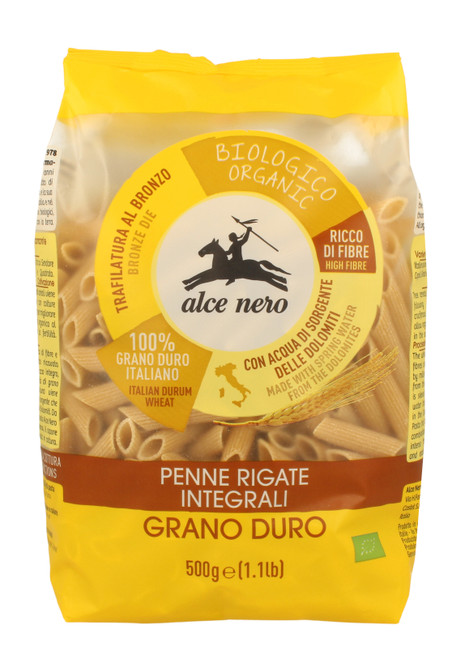El trigo khorasan tiene orígenes antiguos y es originario de Persia. Es un trigo rústico, resistente a la sequía y de gran altura, característica que le permite competir con las hierbas. La cosecha se realiza en verano.
El khorasan es un grano delicado que requiere un suelo fértil y un clima cálido para un crecimiento satisfactorio; de lo contrario, las cosechas suelen ser escasas. Siempre se ha cultivado en la zona mediterránea, especialmente en el norte de África, España e Italia. Las zonas de cultivo donde mejor expresa sus características en Italia hoy en día son las regiones de Sicilia y Apulia. Para nuestros espaguetis integrales de trigo khorasan, utilizamos exclusivamente trigo orgánico cultivado en Italia.
El proceso de elaboración de los espaguetis integrales de trigo khorasan Alce Nero dura de 3 a 4 días. Este lento proceso es el secreto para obtener espaguetis más resistentes que nunca se pasan de cocción. La masa se pasa por moldes de bronce para crear una superficie rugosa y dar forma a la pasta. Posteriormente, la pasta se seca en celdas estáticas donde se reproduce el proceso tradicional: los espaguetis se secan a bajas temperaturas, por debajo de los 50°C, durante aproximadamente 50 horas.
Khorasan wheat has ancient origins and is native to Persia. It is a rustic, drought-resistant and tall wheat, a characteristic that allows it to compete with herbs. Harvesting takes place in summer.
Khorasan is a delicate grain which requires fertile soil and a warm climate in order to achieve satisfactory growth, otherwise harvests tend to be meagre. It has always been cultivated in the Mediterranean area, especially in North Africa, Spain and Italy. The areas of cultivation where it best expresses its characteristics in Italy today are the regions of Sicily and Puglia. For our khorasan wheat wholemeal spaghetti we only use organic wheat grown in Italy.
The process used to make Alce Nero wholemeal khorasan wheat spaghetti lasts 3-4 days. This slow process is the secret to obtaining more resistant spaghetti which is more resistant and never overcooks. The dough is passed through bronze dies to create a rough surface and shape the pasta. The pasta is then dried in static cells where the traditional process is reproduced: spaghetti is dried at low temperatures, below 50°C, for approximately 50 hours.
- Best by date:
- 29/08/2023







